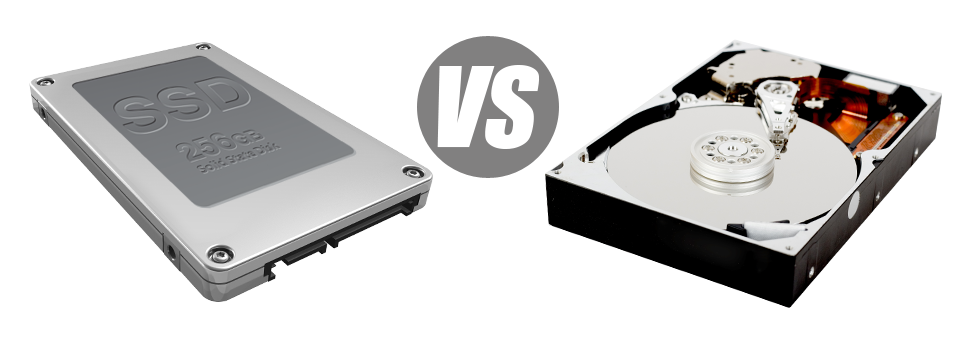For years there seemed to be only one efficient solution to store data on your personal computer – with a hard drive (HDD). Nonetheless, this sort of technology is by now expressing it’s age – hard disk drives are actually noisy and sluggish; they are power–hungry and have a tendency to generate quite a lot of warmth for the duration of serious operations.
SSD drives, alternatively, are swift, use up way less energy and they are far less hot. They furnish an exciting new method to file access and data storage and are years in front of HDDs with regards to file read/write speed, I/O efficiency and also energy capability. Figure out how HDDs fare up against the more recent SSD drives.
1. Access Time
SSD drives offer a fresh & ingenious approach to file safe–keeping according to the utilization of electronic interfaces as an alternative to just about any moving components and turning disks. This completely new technology is much quicker, permitting a 0.1 millisecond data file accessibility time.
HDD drives make use of rotating disks for data storage applications. Each time a file is being utilized, you need to wait around for the right disk to reach the correct position for the laser beam to view the data file in question. This leads to a standard access speed of 5 to 8 milliseconds.
2. Random I/O Performance
On account of the brand new significant data file storage strategy adopted by SSDs, they offer speedier file access speeds and better random I/O performance.
Throughout our lab tests, all SSDs revealed their capacity to manage at the least 6000 IO’s per second.
With an HDD drive, the I/O performance steadily increases the more you employ the disk drive. However, in the past it actually reaches a specific limitation, it can’t go swifter. And because of the now–old concept, that I/O restriction is a lot below what you could have with a SSD.
HDD are only able to go as far as 400 IO’s per second.
3. Reliability
SSD drives are lacking any sort of moving components, meaning there’s far less machinery within them. And the less actually moving parts you can find, the lower the prospect of failing can be.
The standard rate of failing of an SSD drive is 0.5%.
HDD drives implement spinning disks for keeping and reading info – a technology since the 1950s. With hard disks magnetically hanging in mid–air, spinning at 7200 rpm, the prospects of something going wrong are usually bigger.
The average rate of failing of HDD drives can vary among 2% and 5%.
4. Energy Conservation
SSDs are lacking moving parts and need not much cooling energy. In addition they require a small amount of electricity to function – trials have demostrated that they can be powered by a standard AA battery.
In general, SSDs use up amongst 2 and 5 watts.
From the second they have been developed, HDDs have invariably been really energy–heavy equipment. Then when you have a hosting server with plenty of HDD drives, this can increase the month–to–month electric bill.
Typically, HDDs use up in between 6 and 15 watts.
5. CPU Power
Because of SSD drives’ better I/O efficiency, the leading server CPU can process data queries faster and preserve time for different procedures.
The standard I/O wait for SSD drives is exactly 1%.
HDD drives support reduced access rates rather than SSDs do, which will result in the CPU being forced to hold out, while scheduling allocations for the HDD to uncover and give back the demanded file.
The common I/O wait for HDD drives is just about 7%.
6.Input/Output Request Times
It is time for several real–world examples. We, at Sian Hosting and Domain Names, competed a complete platform backup with a server using only SSDs for file storage uses. During that process, the normal service time for an I/O request kept below 20 ms.
Compared to SSD drives, HDDs provide substantially sluggish service rates for I/O demands. Throughout a web server backup, the standard service time for any I/O call varies somewhere between 400 and 500 ms.
7. Backup Rates
Talking about back ups and SSDs – we’ve discovered an effective advancement in the data backup rate as we turned to SSDs. Right now, a usual hosting server back up will take solely 6 hours.
Alternatively, on a hosting server with HDD drives, the same backup normally requires three or four times as long to finish. A complete back–up of any HDD–equipped web server often takes 20 to 24 hours.
Our VPS web hosting plans and then the routine hosting plans accounts include SSD drives by default. Join our Sian Hosting and Domain Names family, to check out how we may help you improve your web site.
Hepsia
- Live Demo
Service guarantees
- Sign up today. You won’t see any setup rates and you’ll have complete root and SSH access to the server. 99.9% network uptime is warranted.
Compare our prices
- Preview the resources and characteristics coming with our Virtual Private Servers. You can start off with a cheaper VPS Web Hosting configuration and upgrade with simply a click of the mouse as your requirements grow.
- Compare our hosting plans
Contact Us
- Get in touch with us 24x7x365 by email or by employing our super–fast ticketing system. Our techs are ready to answer any questions in up to 60 mins.














